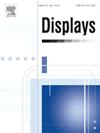Using query semantic and feature transfer fusion to enhance cardinality estimating of property graph queries
IF 3.7
2区 工程技术
Q1 COMPUTER SCIENCE, HARDWARE & ARCHITECTURE
引用次数: 0
Abstract
With the increasing complexity and diversity of query tasks, cardinality estimation has become one of the most challenging problems in query optimization. In this study, we propose an efficient and accurate cardinality estimation method to address the cardinality estimation problem in property graph queries, particularly in response to the current research gap regarding the neglect of contextual semantic features. We first propose formal representations of the property graph query and define its cardinality estimation problem. Then, through the query featurization, we transform the query into a vector representation that can be learned by the estimation model, and enrich the feature vector representation by the context semantic information of the query. We finally propose an estimation model for property graph queries, specifically introducing a feature information transfer module to dynamically control the information flow meanwhile achieving the model’s feature fusion and inference. Experimental results on three datasets show that the estimation model can accurately and efficiently estimate the cardinality of property graph queries, the mean Q_error and RMSE are reduced by about 30% and 25% than the state-of-art estimation models. The context semantics features of queries can improve the model’s estimation accuracy, the mean Q_error result is reduced by about 20% and the RMSE result is about 5%.
利用查询语义和特征转移融合来增强属性图查询的核心估计能力
随着查询任务的复杂性和多样性不断增加,中心度估计已成为查询优化中最具挑战性的问题之一。在本研究中,我们提出了一种高效、准确的多因性估计方法,以解决属性图查询中的多因性估计问题,尤其是针对当前忽视上下文语义特征的研究空白。我们首先提出了属性图查询的形式化表征,并定义了属性图查询的中心性估计问题。然后,通过查询特征化,我们将查询转化为可被估计模型学习的向量表示,并通过查询的上下文语义信息丰富特征向量表示。最后,我们提出了一种针对属性图查询的估算模型,特别引入了一个特征信息传递模块来动态控制信息流,同时实现模型的特征融合和推理。在三个数据集上的实验结果表明,该估计模型能准确、高效地估计出属性图查询的卡片度,其平均 Q_error 和 RMSE 比现有估计模型分别降低了约 30% 和 25%。查询的上下文语义特征可以提高模型的估计精度,平均 Q_error 结果降低了约 20%,RMSE 结果降低了约 5%。
本文章由计算机程序翻译,如有差异,请以英文原文为准。
求助全文
约1分钟内获得全文
求助全文
来源期刊

Displays
工程技术-工程:电子与电气
CiteScore
4.60
自引率
25.60%
发文量
138
审稿时长
92 days
期刊介绍:
Displays is the international journal covering the research and development of display technology, its effective presentation and perception of information, and applications and systems including display-human interface.
Technical papers on practical developments in Displays technology provide an effective channel to promote greater understanding and cross-fertilization across the diverse disciplines of the Displays community. Original research papers solving ergonomics issues at the display-human interface advance effective presentation of information. Tutorial papers covering fundamentals intended for display technologies and human factor engineers new to the field will also occasionally featured.
 求助内容:
求助内容: 应助结果提醒方式:
应助结果提醒方式:


